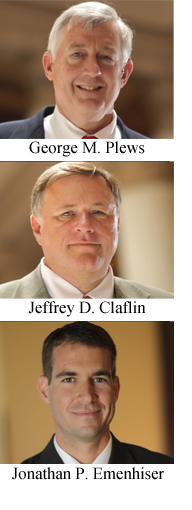Another Win for Policyholders!
 The Indiana Supreme Court once again has refused to grant transfer on a case that Plews Shadley Racher & Braun, LLP (“PSRB”) twice successfully argued in the Indiana Court of Appeals. The Supreme Court denial leaves in place the December 29, 2014 decision from the Court of Appeals, FLM v. Cincinnati Ins. Co., 24 N.E.3d 444 (Ind. Ct. App. 2014), which affirmed additional insurance coverage for environmental claims arising from the abandonment of foundry sand from the Daimler Chrysler foundry in Indianapolis.
The Indiana Supreme Court once again has refused to grant transfer on a case that Plews Shadley Racher & Braun, LLP (“PSRB”) twice successfully argued in the Indiana Court of Appeals. The Supreme Court denial leaves in place the December 29, 2014 decision from the Court of Appeals, FLM v. Cincinnati Ins. Co., 24 N.E.3d 444 (Ind. Ct. App. 2014), which affirmed additional insurance coverage for environmental claims arising from the abandonment of foundry sand from the Daimler Chrysler foundry in Indianapolis.
PSRB client FLM, LLC leased a piece of Indianapolis property to International Recycling Inc. (IRI). IRI entered into a contract with Chrysler to collect, transport and dispose of the foundry sand generated at its Indianapolis facility. However, in 2002, Chrysler stopped paying IRI and the company could not afford to remove the sand from FLM’s property. More than 100,000 tons of foundry sand was abandoned on the property. Some of the sand then migrated onto nearby properties, allegedly causing clogged pipes and water accumulation. The Indiana Department of Environmental Management (IDEM) ordered the removal of the foundry sand. The City of Indianapolis followed suit. FLM then sought to have the liability costs covered by IRI’s insurance policies with The Cincinnati Insurance Company.
In a first appeal, FLM v. Cincinnati Ins. Co., 973 N.E.2d 1167 (Ind. Ct. App. 2012), the Court of Appeals upheld FLM’s argument that “personal injury” coverage in the policy applies to cover an environmental cleanup. “Personal injury” coverage is a separate coverage found in almost all liability policies that is in addition to bodily injury and property damage coverage. The Court also held that a contractual liability exclusion did not apply, since IRI would have been liable even absent the indemnity “agreement” in its lease with FLM. A concurrence by Judge Bradford found that the abandonment of the sand by the tenant constituted an “occurrence” also covered by the policy’s property damage coverage, because although the abandonment was intentional (and compelled by the tenant’s financial woes), the damage resulting was not. The Supreme Court denied the insurer’s petition to transfer that appeal.
In the second appeal the Court of Appeals made several rulings that expand coverage by $1 million. First, it agreed with Judge Bradford’s concurrence that the abandonment of the sand constituted an “occurrence” covered by the policy’s separate “property damage” coverage. The Court also found that the policy’s “expected or intended” exclusion did not bar coverage. Finally, the Court agreed with PSRB’s argument that each of the separate property damage and “personal injury” coverages had separate, independent limits which apply to the claim. The policy’s so-called “anti-stacking” provision did not prevent recovery of these multiple limits under different coverages within the same policy. The Supreme Court’s denial of transfer leaves these important rulings from the Court of Appeals intact.
George M. Plews, Jeffrey D. Claflin and Jonathan P. Emenhiser represented FLM in this case. If you have questions about this or other insurance coverage issues, feel free to contact George, Jeff or Jonathan.
Categorized: News

